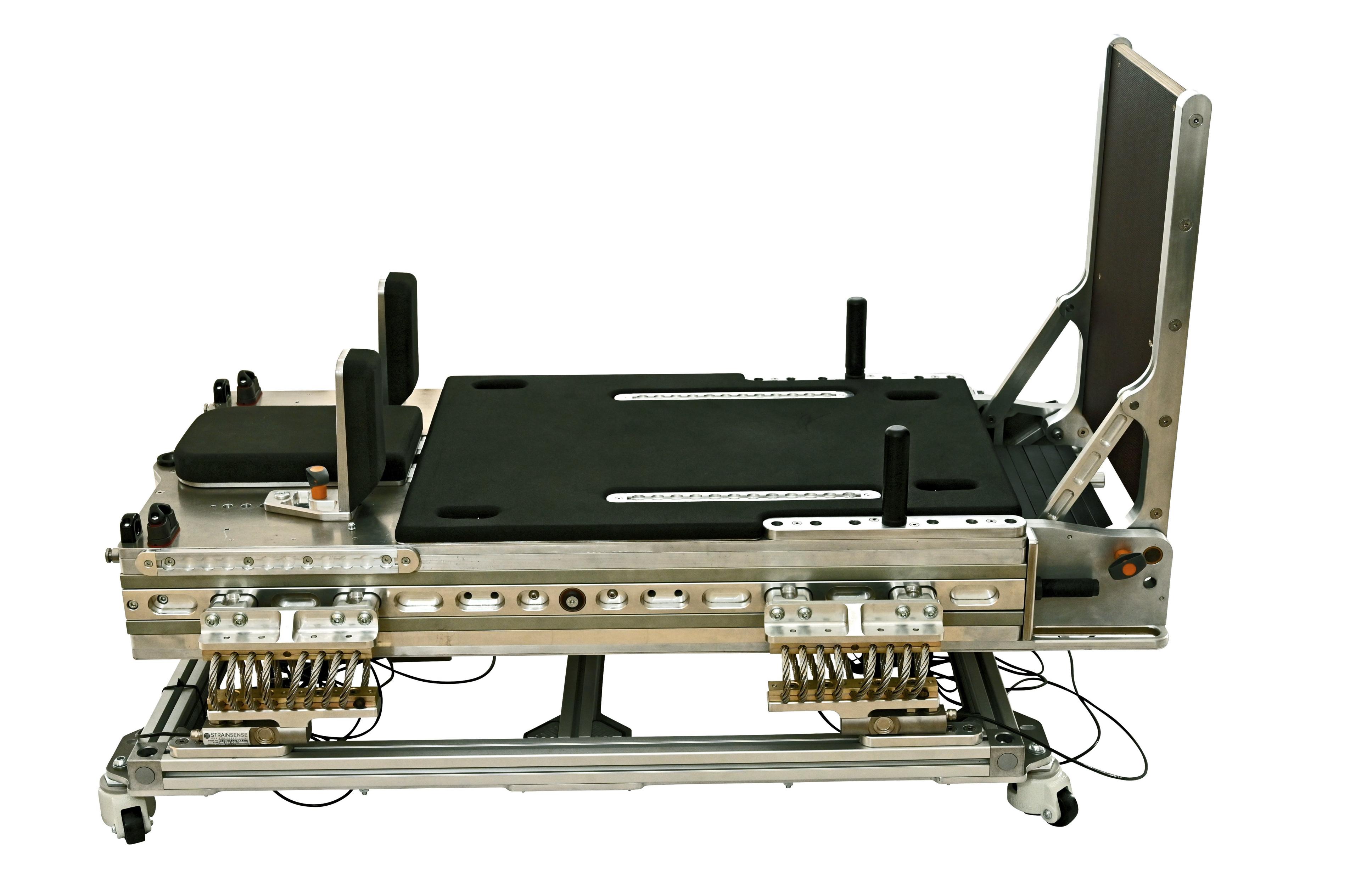New invention to get astronauts moving in space
- Published
- comments

Engineer John Kennett worked with research partners St Mary's University Twickenham on this exercise machine for space
Nasa say that astronauts can lose as much as 10% of their bone density when they're in space.
That's because there is no gravity for their bodies to push against.
An engineer from London thinks he might have the solution to keeping astronauts fit and healthy in space - a machine that allows them to jump in zero gravity.
Jumping in zero gravity would help build up bone density and muscle mass rather than astronauts loosing this while in space.
This is engineer John Kennett
At the moment astronauts spend up to two hours a day, six days a week exercising.
This is to maintain a healthy lifestyle and prevent them from loosing too much muscle and bone density.
Bone density is the amount of minerals mainly calcium and phosphorous each bone has and the stronger the bones the less likely they are to break.
John Kennett, the engineer of this project says that his machine would cut the workouts down to just six minutes a day!
How will it work?
John using the machine
The machine can be used at different settings by both men and women.
It will allow astronauts to take part in a short but intense workout designed to build both muscle mass and bone density.
John Kennett said: "It allows a person, when they're repeatedly jumping, to load their skeletal system, their bones then start to lay down more bone density and more to the point prevent astronauts losing their bone density and muscle mass"
There is nothing else like this invention and John says that jumping is an important factor in maintaining good bone density.
But, jumping in zero gravity is really hard, so he think his invention is the perfect solution.
As do UK and European Space Agencies as they have given him grants to develop his invention!
Does it work?
John Kennett shared a photo of Tess testing the machine on social media
Former NASA astronaut Leroy Chiao says that keeping active and exercising whilst in space is very important for a successful recovery once back on earth.
He said he would welcome shorter workouts to ensure other duties on board the space crafts can still be completed.
Tess Morris-Paterson, who is one of those testing the device, says the short, intense workout gives her a full body benefit.
"When you're jumping on this you can really feel it from your toes right through your shoulders, your bone mineral density right through your ankle, your knees, your hips, right through your spine as well, and from a muscular perspective you can really feel it working almost everything really," she says.
Experts say this device could also save much needed space on board.
Next year the machine will be tested at zero gravity and its hoped it will join some astronauts on board by 2024!
- Published23 September 2020
- Published4 October 2019
